The first step in eating leftovers is learning how to reheat them in a way that makes them tasty! These reheating tips and tricks will change your kitchen game.
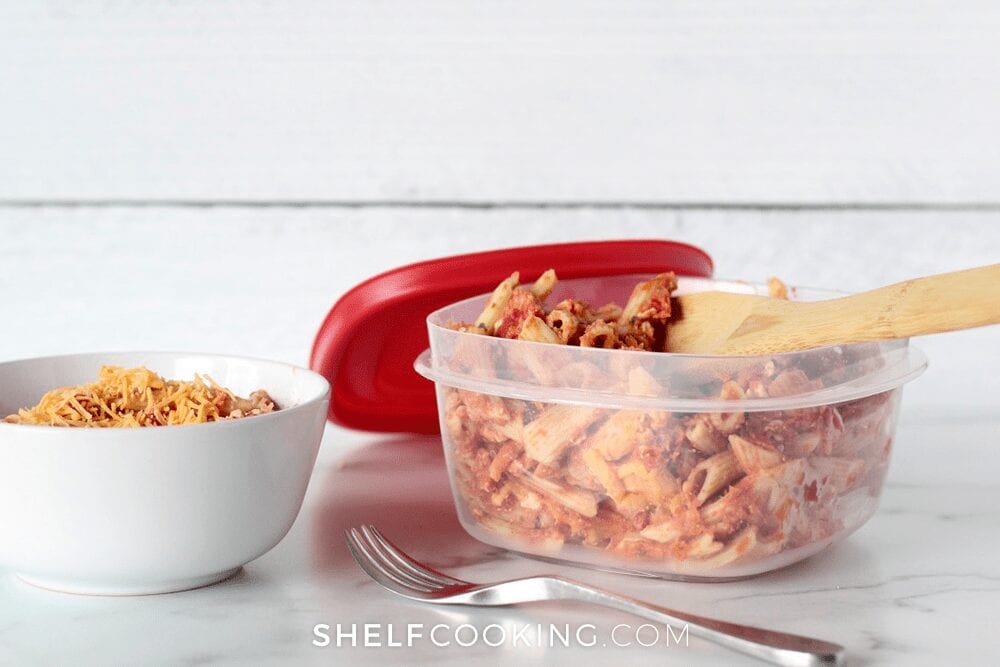
So maybe you are one of those people who thought that leftovers are lame. That couldn't be further from the truth! Need some convincing? We are completely obsessed with leftovers. That's right, obsessed!
The number one thing you need to know when eating leftovers is how to reheat leftovers correctly. Yes, there is a right way to do it! And we're about to let you in on this foodie secret. Can we call it a “foodie” secret if we're talking about leftovers?? I think we can… cause we're turning our leftovers into somethin' real nice here.
*Note: When you click the links in this post, we may receive a commission at no extra cost to you.
These reheating tips will help transform your leftovers from potential mush to something delicious you look forward to.
HEAT IT LIKE YOU MEAN IT
If you asked my husband for a weird quirk about me (and boy, I have many), he’d almost certainly say it’s how OCD I am about the temperature of my food and drinks. If hot food isn’t scald-your-mouth hot and cold food or drinks aren't hurt-your-teeth-and-bash-your-head-in cold, I'm not interested. That’s not all: I’ll complain. Loudly.
Don’t be a wimp when it comes to reheating your leftovers—get in there and HEAT them! And don’t think the microwave is your only option, though it is right up there with disposable diapers when it comes to convenience. Use the following tips for success!
MICROWAVING LEFTOVERS
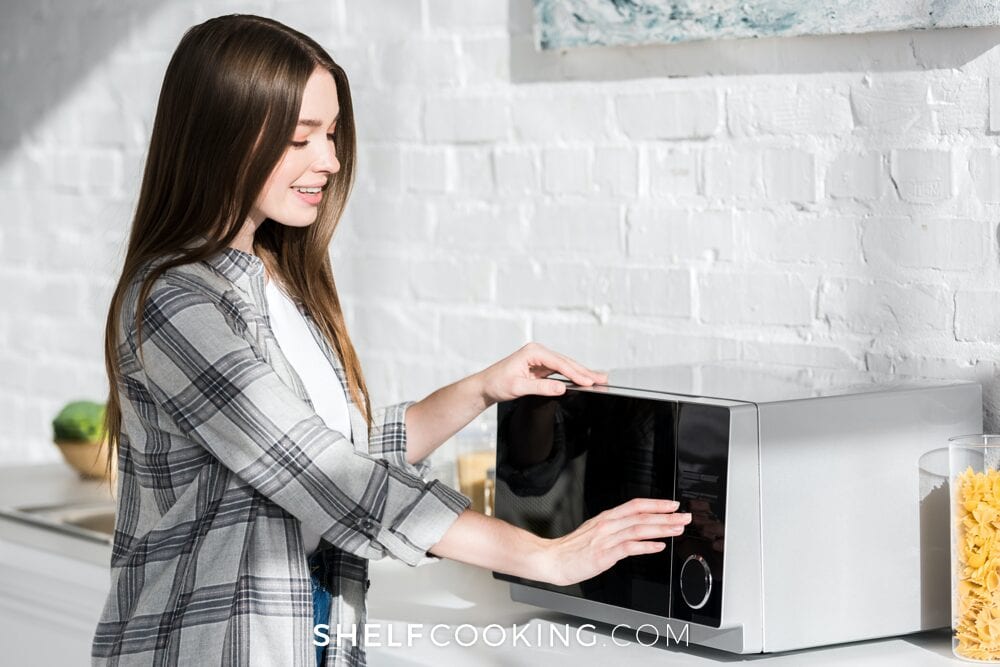
That’s right: don’t limit yourself to the microwave but use it to your best advantage. In fact, my rule of thumb is microwave first. Just remember, you don’t have to stop there (and rarely should).
A word to the wise before I spill the tips: if you do decide to stop there, for crying out loud, make sure it’s heated thoroughly. Don’t microwave something for one minute and call it a day. BLEUGH! Heat it. Stir it. Rotate it. Flip it. Then heat it again. Make sure it's heated all the way through before eating it. If it doesn't taste awesome, you aren't going to want to eat it again, so take the time to make it awesome!
HOW TO REHEAT LEFTOVERS IN THE MICROWAVE
Whether it's pizza, casserole, soup, veggies, or whatever leftover you snatch out of the fridge, heat it in the microwave to get things moving, melting, and melding quickly. Ain't nobody got fifteen minutes to wait for leftovers to heat properly on the stove when you're so hungry you are about to eat the toddler that’s screaming at your left leg! If leftovers take forever to fix, you'll find yourself opting for convenience food instead. So learn to love your microwave.
- Put a wet paper towel over your food. Not only does it keep the stuff from drying out, it prevents nasty splatters all over the microwave. These microwave plate covers are pretty nifty, too!
- This may seem pretty basic, but if you’re heating a large piece of something like a casserole, cut it into smaller pieces so it doesn’t overcook by the time it gets heated through.
- If you're reheating several elements, heat them separately before you combine them. For example, a rice bowl with beans and meat… heat it all separate before you put them together!
Pro Tip: Once your food is heated through in the microwave, it’s time to take it to the next level: toast it, broil it, or pan-fry it. Top it off for a few minutes in the toaster, in a pan on the stove, or under the oven broiler for a quick minute or two to top it off nicely. It adds a little crunch, browns the crust, stiffens the soggy, whatever needs to be done. Magic happens with toasting, broiling, pan-frying, and pan-heating.
REAL LIFE EXAMPLE
We had some leftover pizza, and the cheese had gotten a bit gummy in the fridge. I know you’ve been there. Our fix? First, we microwaved it, then toasted BOTH SIDES (yes, crust side and topping side) in a frying pan on the stove.
Truth be told, that’s actually how I make my grilled cheese sandwiches and quesadillas, too—I microwave first to melt the cheese, then toast on the stove for some crunch. Makes them in half the time and they are so melty and delicious.
When it comes time to pop the microwaved (or not) leftovers under the broiler or on the stovetop, use the following spiffy hacks.
BROIL LEFTOVERS
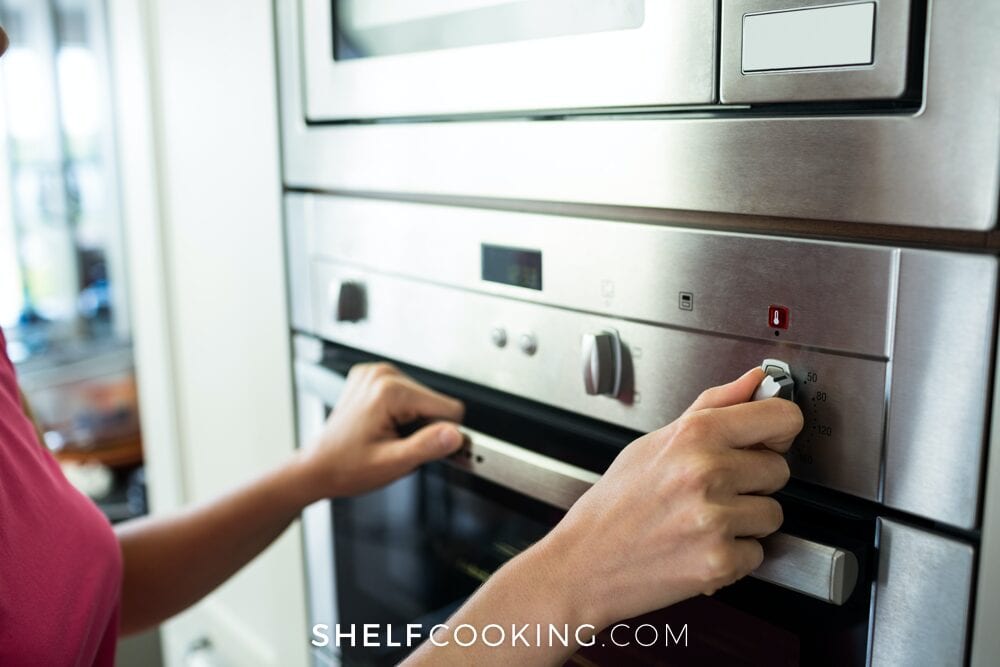
If it hasn’t happened already, it’s time to meet your broiler. It’s the high-heat setting in your oven that lets you toast something quickly and intensely. The heat comes off the coils at the very top of the oven. Lots of ovens have multiple broil settings; mine has three – low, medium, and high.
Word to the Wise: If you put your rack too high and broil on the highest setting, a few seconds can make the difference between a perfectly toasted bit of heaven and a roaring oven fire. You've been warned!
You can broil all kinds of leftovers, including:
- French fries
- Bread (cheesy garlic bread, French bread, breadsticks)
- Sandwiches (flip the sandwich over halfway through so the bottom gets crispy too)
- Pizza
- Anything with melted cheese on it
- Breaded items (like chicken fingers or chicken nuggets)
- Fried foods (including mozzarella sticks)
- Casseroles with cheese or crumb topping (heat individual portions in the microwave first, then transfer to an oven-safe pan to broil)
HOW TO REHEAT LEFTOVERS IN THE OVEN
Those suggestions just scratch the surface. Use your imagination and experiment! Whatever you’re crisping up in the broiler, remember:
- Heat it first in the microwave or on the stove, then use the broiler just to crisp it up or brown the top as a last step. The broiler is so intense that you’ll never be able to heat food all the way through before it starts to burn on the top.
- Consider dishing the portion you wish to reheat into a microwave and oven-safe dish so you don’t have to transfer it. Limits the dishes you have to wash. You're welcome!
- Help the toasting process along by spraying a little cooking oil or cooking spray on top of the food, or spread a little melted butter over it. The key word here is little.
- Add fresh seasonings and salt/pepper to freshen up the taste.
- Broiling focuses heat on the TOP of the food. That’s all. If the bottom, sides, or middle need to be toasted, you should do it on the stove (more about that in a minute).
- Keep a constant eye on your food while it’s under the broiler. A few seconds can mean the difference between perfectly toasted and charcoal. Now you've been warned twice!
USE A FRYING PAN ON THE STOVE
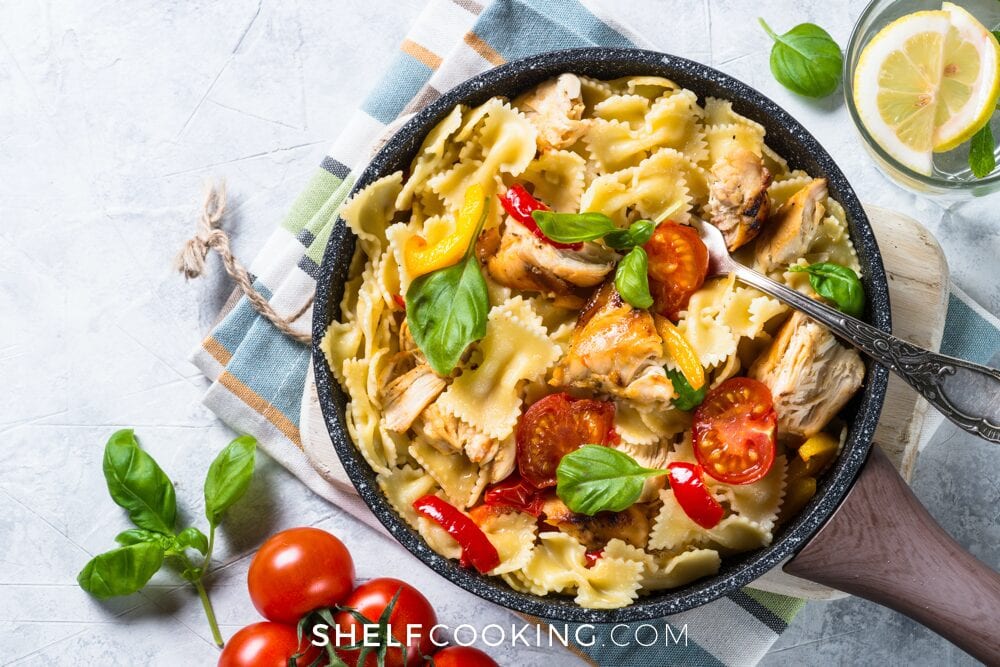
Don’t let the word frying pan throw you off—when it comes to leftovers, you’ll be using it in lots of ways that have nothing to do with frying.
You can, of course, fry, but you can also stir-fry, sauté, and toast in the frying pan. Some of the best leftovers to refresh in a frying pan include:
- Pizza (it makes the crust crispy again)
- Burritos, tacos, and chimichangas
- Pasta
- Large cuts of meat (steak, chicken, pork chops . . .)
To oil, or not to oil—that is the question. It depends on the food and on your personal taste. Using a little oil (you don’t want to deep-fry!) will slightly brown the outsides and crisp them up a bit.
HOW TO REHEAT LEFTOVERS IN A FRYING PAN
- Heat the food in the microwave first, even if only partially. You want to get the center warm without burning the outside to a crisp
- Speaking of crisp, use a little butter, oil, or cooking spray in the pan if you want to crisp it up or brown it.
- Add fresh seasonings and salt/pepper to freshen up the taste.
USE A SAUCE PAN ON THE STOVE
A saucepan on the stovetop is the perfect way to heat things like soup, sauce, pasta, shredded meat, and anything else you don’t want to crisp or brown. There are two main things to remember here: slowly warm the food and stir it frequently to heat it evenly.
HOW TO REHEAT LEFTOVERS IN A SAUCE PAN
- Use the right size pan for the food you’re reheating. Too big? You risk scorching. Too small? The stuff will take forever to heat.
- Restore the food to its original consistency by adding some liquid—water, chicken or beef stock, milk, cream, or butter. One of the main reasons leftovers can be so nasty is because they get dried out.
- Use a whisk, spoon, spatula, or tongs (good for pasta and meat) to stir and turn the food frequently so it gets evenly heated.
- Keep the heat moderate – if it’s too high, you’ll destroy the outside before the center heats.
- Add fresh seasonings and salt/pepper to freshen the taste.
Alright, now you're a pro and know how to reheat leftovers! Follow all of these steps and you'll actually start looking forward to eating leftovers for lunch or dinner.
Now that your leftovers are heated, it’s time to take it up a notch. We're talking all about how to repurpose your leftovers here! This is the next step in transforming your leftovers, so make sure you hop on over and read all about it! We've got four more tips to help make your leftovers into a brand new meal that is sometimes better than the original. It's happened. No joke.
Try it out and let us know how you like it! Our Shelf Cooking Community on Facebook has tons more ideas, so be sure to check there as well!
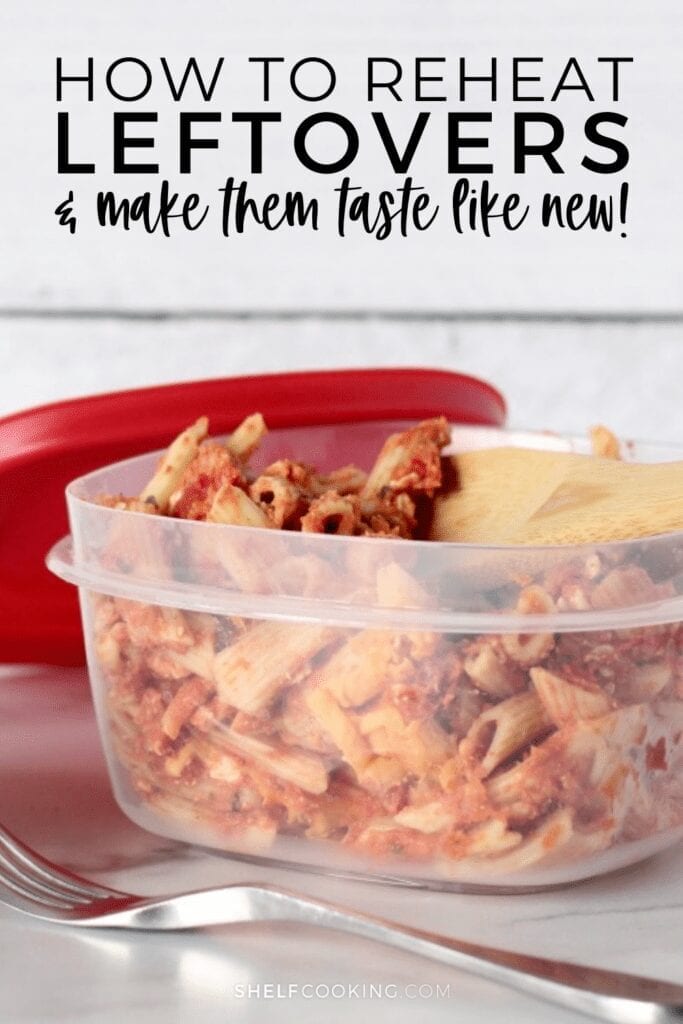
Check out these posts, too!
- Check out these delicious crunchy French toast sticks!
- Start keeping a kitchen inventory and stop wasting food.
- Set up a grocery budget to stay on track!
Keep it toasty!
